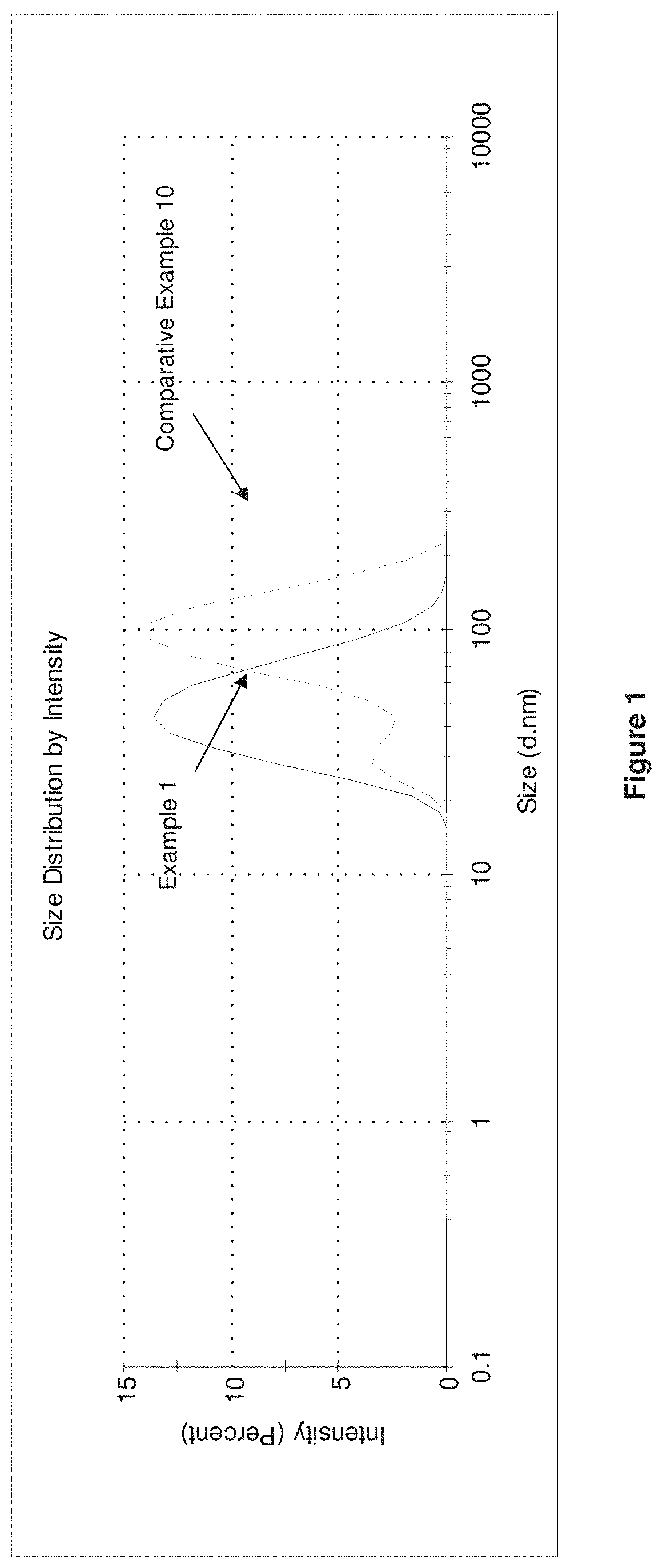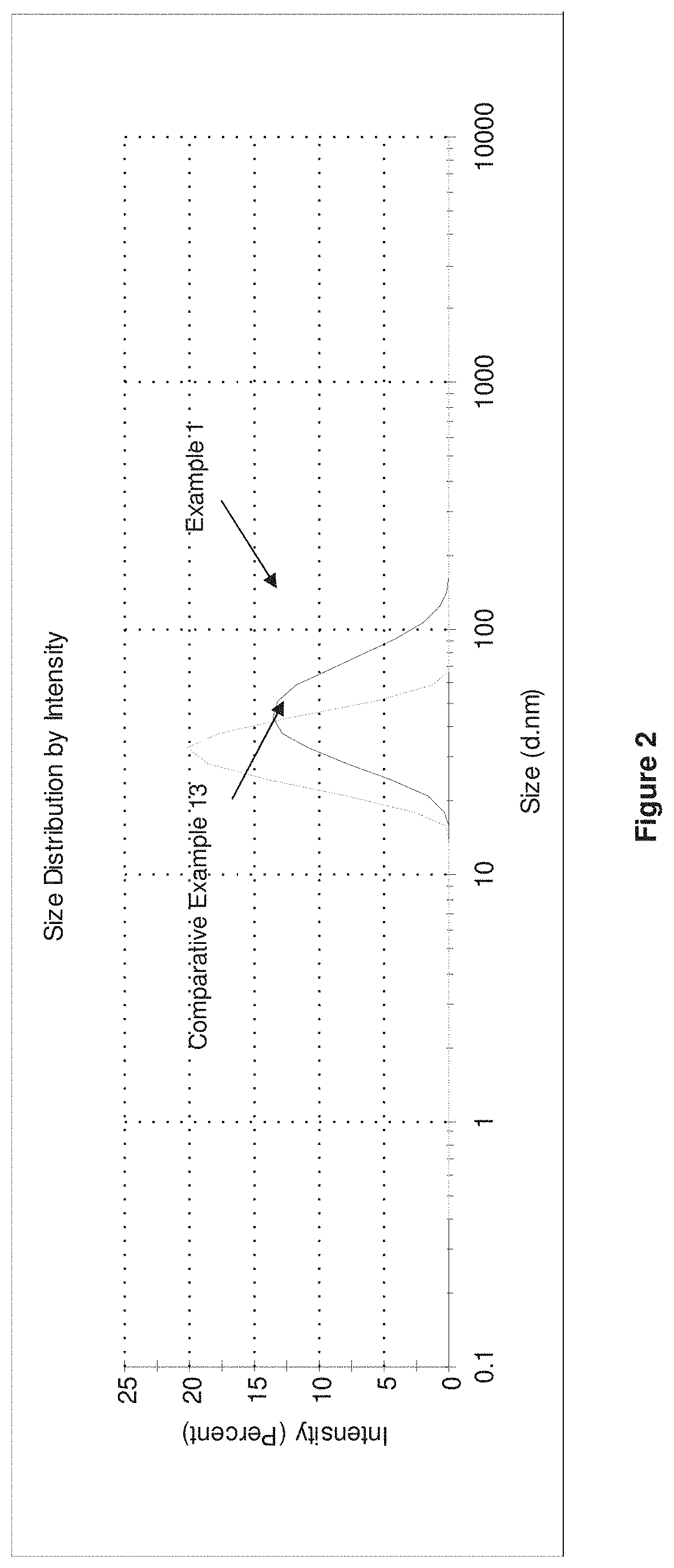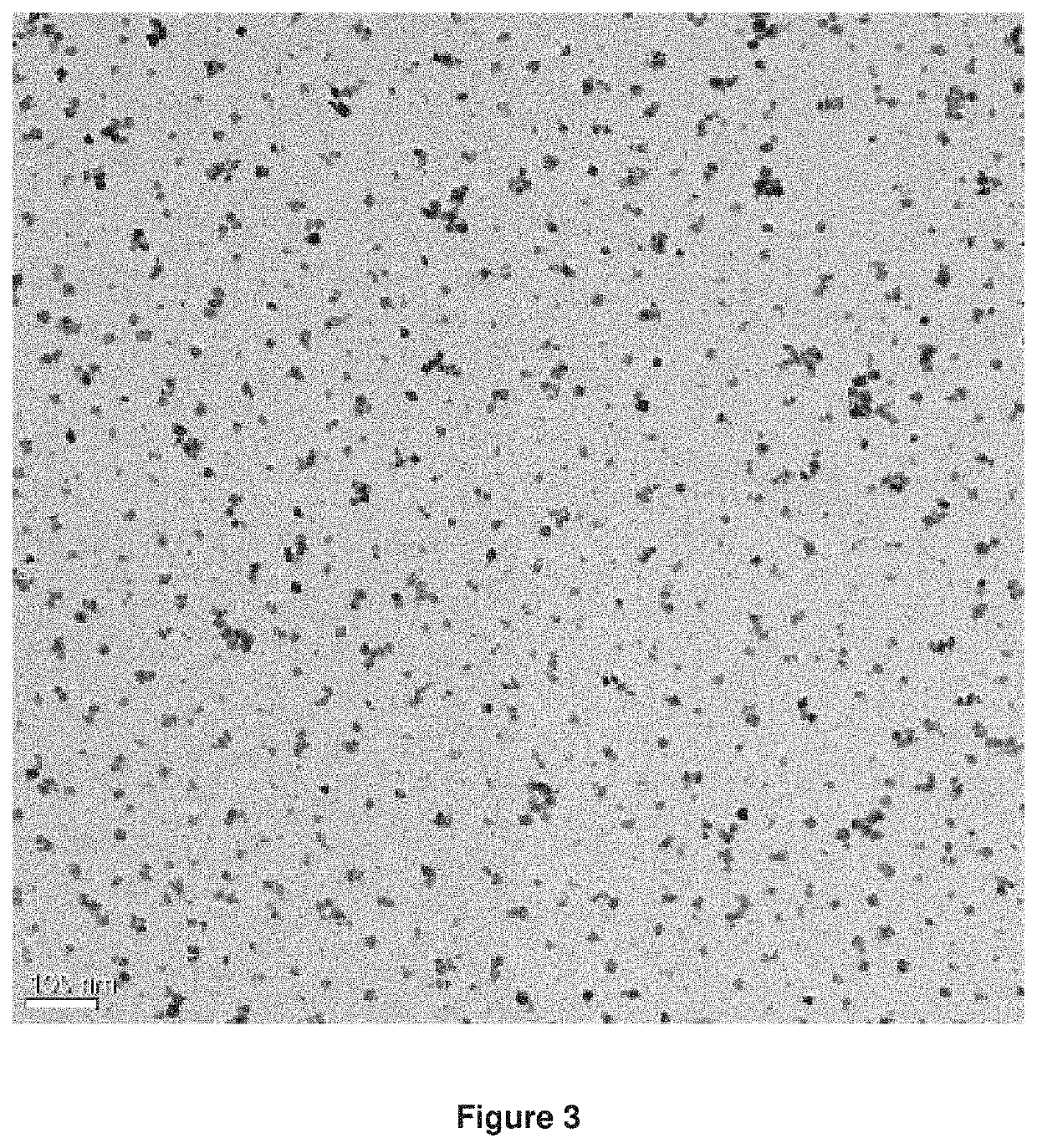Zirconia dispersion for use in forming nano ceramics
- Summary
- Abstract
- Description
- Claims
- Application Information
AI Technical Summary
Benefits of technology
Problems solved by technology
Method used
Image
Examples
example 1
An aqueous dispersion of an yttrium doped zirconium hydrous oxide was prepared by taking XZ02738 a material grade from Luxfer MEL Technologies with a ratio of oxides of zirconium:yttrium:aluminium of 94.45:5.3:0.25, which was made up to 500 g using deionised water to give an total oxide content of 25% by weight. This dispersion had a starting particle size of 1.4 microns measured via laser diffraction. This dispersion was aged at >80° C. and subjected to at least 24 hours mixing under high shear (>1,000,000 s−1) in the presence of an amino acid dispersant (3-aminopropanoic acid), added at 2 wt % on oxide (ie 2 wt % relative to the weight of the oxide). The final concentration was increased to 56.0% solids using membrane filtration. The final particle size distribution of the dispersion, measured via DLS, was a Z-Ave of 43.7 nm, a PDI of 0.140 and a PDI Width of 16.4 nm. The powder XRD results gave a crystallite size of 12 nm and a phase analysis of 1.4% monoclinic and 98.6% tetragon...
example 2
An aqueous dispersion of an yttrium doped zirconium hydrous oxide was prepared by taking XZ02738, a material grade from Luxfer MEL Technologies with a ratio of oxides of zirconium:yttrium:aluminium of 94.45:5.3:0.25, which was made up to 500 g using deionised water to give an active content of 25% by weight. This dispersion was aged at >80° C. and subjected to at least 24 hours mixing under high shear in the presence of an amino acid dispersant (3-aminopropanoic acid), added at 2 wt % on oxide. The final concentration was increased to 58.0% solids using membrane filtration. The final particle size distribution of the dispersion, measured via DLS, was a Z-Ave of 46.8 nm, a PDI of 0.142 and a PDI Width of 17.6 nm. The powder XRD results gave a crystallite size of 12 nm and a phase analysis of 0.9% monoclinic and 99.1% tetragonal / cubic phase. A green body was prepared by following the method of Example 1 of US 2016 / 0095798 A1, resulting in a green density of 2.720 g / cm3. All of the gre...
example 3
An aqueous dispersion of an yttrium doped zirconium hydrous oxide was prepared by taking XZ02738, a material grade from Luxfer MEL Technologies with a ratio of oxides of zirconium:yttrium:aluminium of 94.45:5.3:0.25, which was made up to 500 g using deionised water to give an active content of 25% by weight. This dispersion was aged at >80° C. and subjected to at least 24 hours mixing under high shear in the presence of an amino acid dispersant (3-aminopropanoic acid), added at 2 wt % on oxide. The final concentration was increased to 59.5% solids using membrane filtration. The final particle size distribution of the dispersion, measured via DLS, was a Z-Ave of 42.8 nm, a PDI of 0.122 and a PDI Width of 15.0 nm. The powder XRD results gave a crystallite size of 12 nm and a phase analysis of 1.5% monoclinic and 98.5% tetragonal / cubic phase. A green body was prepared by following the method of Example 1 of US 2016 / 0095798 A1, resulting in a green density of 2.710 g / cm3. All of the gre...
PUM
| Property | Measurement | Unit |
|---|---|---|
| Fraction | aaaaa | aaaaa |
| Width | aaaaa | aaaaa |
| Particle size | aaaaa | aaaaa |
Abstract
Description
Claims
Application Information
 Login to View More
Login to View More - R&D
- Intellectual Property
- Life Sciences
- Materials
- Tech Scout
- Unparalleled Data Quality
- Higher Quality Content
- 60% Fewer Hallucinations
Browse by: Latest US Patents, China's latest patents, Technical Efficacy Thesaurus, Application Domain, Technology Topic, Popular Technical Reports.
© 2025 PatSnap. All rights reserved.Legal|Privacy policy|Modern Slavery Act Transparency Statement|Sitemap|About US| Contact US: help@patsnap.com



